First public exhibition
The first public exhibition of the Linee was at Galleria Pozzetto Chiuso in Albissola Marina, between 18 and 24 August, occasion in which Lucio Fontana Buy the Linea m 9,48. [2] The second public presentation of the lines was at the inaugural exhibition of the Galleria Azimut, Milan, a space run by Enrico Castellani and Manzoni himself, between 4 and 24 December 1959. 11 lines were exhibited unopened on wooden plinths, whilst a twelfth strip was unrolled and attached directly to the entire length of one wall. The tubes were sold for between 25 and 80 thousand lire, [3] depending on their length, which ranged from 4m 89 to 33m 63. Manzoni seems to have changed his mind about the unveiling of the twelfth strip, as he wrote in May 1960 that the tubes ‘must not be opened.’ [4] Despite this, the strips are still occasionally unrolled when exhibited.
Originally the lines, when bought, would become a personal act of unveiling by the buyer, not dissimilar to an individual reading a book. There are documentary photos by Manzoni recording one such opening. Uliano Lucas, a friend and occasional collaborator of Manzoni is shown unravelling one such line, to discover the text '15 Capo Linea' (Head Line) at the end. [5] Once the practice of demanding that the work remained hidden had been established, however, the tubes became objects that record an unseen artistic event, at a specific moment in time; what Duchamp called ‘a kind of rendezvous’.
The artistic act of drawing the lines becomes totally obscured, replaced by an imaginary idea of what they might look like, born witness by the labels on the tube, but not revealed. The works elevate the external text whilst diminishing the art object, implying that only the visualisation of the work in the mind's eye is valid. This idea was to be taken further with his Artist's Shit , where the contents are unknowable without destroying the container, and reached its logical conclusion with the Lines of Infinite Length, where the line only exists as a metaphysical speculation.
Although the Lines are hidden from view, their labels identify them as events that occurred at a particular time; they are like pieces of evidence bearing witness to the artist's activity. The object of our gaze is therefore not a finished product, but rather the remnant of an act that has transpired. [6]
Lines of Exceptional Length (Linee dalla lunghezza eccezionale, 1960-1961)
There were three extra works that followed the original multiple; All were lines equal to or in excess of a kilometre long, and were contained in metal cylinders. The first, a 7,200 m line made in the presence of witnesses, was drawn on a rotary press at the Printing press for the newspaper Herning Avis, Denmark, on July 4, 1959. [7] The work was made with a bottle filled with ink with a stopper at the top. The continuous sheet was then placed inside a zinc cylinder covered in lead sheets. Two more Lines of Exceptional Length were made on 24 July 1961, one 1,000 m long, the other 1,140 metres.
These were then placed in steel containers, and marked the beginnings of a series of cylinders Manzoni planned to leave in the principal cities of the world, which, when the lines were joined, would be equal to the circumference of the world. [8] This work would remain unfinished at his death, 20 months later.
Another related work on this theme are the Linee di Lunghezza Infinita of 1960 (Lines of Infinite Length), made of a carved piece of wood, closely resembling the original Linee, and similarly labelled, but citing the length of the strip contained inside as Infinite. Since the wood is solid, it cannot contain a strip inside, any more than if there were, it couldn't be infinitely long. The piece takes ideas Manzoni had about works existing only in the viewers imagination to their logical conclusion; the work, in effect, is impossible, containing an impossible line, and therefore can only exist in the viewer's mind.
Six were made before Manzoni's death, although he printed and signed more labels, which have been used to complete the edition since his death.
The ‘disappearance of the artwork as literal object’, and the elevation of the text as central to the works meaning clearly anticipates the conceptual art movement of the late 1960s.
Manzoni also prepared a mock-up of three booklets, intended to be published as part of the avant-garde magazine Gorgona, Zagreb. One of these, Table of Assessment #3, was a booklet featuring a continuous line running the length of the booklet. The work was never realised due to lack of funds. [9]
Influences
Robert Rauschenberg’s Automobile Tire Print, 1951 is an obvious precedent, being a scroll containing a continuous (tyre) print, which can only be seen in sections. The work is also contemporaneous with Jean Tinguely's Cyclomatic, a big machine made of a roll of paper 11/2 km long, bicycle parts and an inkpad. When ridden by two cyclists, the work would scatter continuous bicycle tyre prints into the audience. [10] The work of Marcel Duchamp also provides a number of reference points, being concerned with the removal of the artist’s hand from the artwork, and attempting to negate any aesthetic decisions.
The sale of different Lines at different prices recalls Yves Klein’s "Proposition: Monochrome" exhibition in Milan, 1957, which Manzoni is known to have seen and been deeply affected by. [11] The lines of exceptional lengths are recalled in Martin Kippenberger's "Metro-Net", a series of subway entrances intended to be built into the ground of every major city in the world, metaphysically joining them. Like Manzoni, Kippenberger would die before more than a handful were completed. [12]
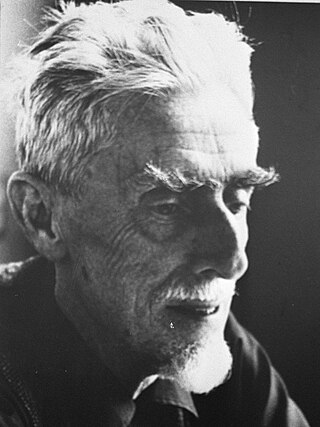
Maurits Cornelis Escher was a Dutch graphic artist who made woodcuts, lithographs, and mezzotints, many of which were inspired by mathematics. Despite wide popular interest, for most of his life Escher was neglected in the art world, even in his native Netherlands. He was 70 before a retrospective exhibition was held. In the late twentieth century, he became more widely appreciated, and in the twenty-first century he has been celebrated in exhibitions around the world.

New materials in 20th-century art were introduced to art making from the very beginning of the century. The introduction of new materials and heretofore non-art materials helped drive change in art during the 20th century. Traditional materials and techniques were not necessarily displaced in the 20th century. Rather, they functioned alongside innovations that came with the 20th century. Such mainstays as oil-on-canvas painting, and sculpting in traditional materials continued right through the 20th century into the 21st century. Furthermore, even "traditional" materials were greatly expanded in the course of the 20th century. The number of pigments available to artists has increased both in quantity and quality, by most reckoning. New formulations for traditional materials especially the commercial availability of acrylic paint have become widely used, introducing initial issues over their stability and longevity.
Conceptual art, also referred to as conceptualism, is art in which the concept(s) or idea(s) involved in the work are prioritized equally to or more than traditional aesthetic, technical, and material concerns. Some works of conceptual art may be constructed by anyone simply by following a set of written instructions. This method was fundamental to American artist Sol LeWitt's definition of conceptual art, one of the first to appear in print:
In conceptual art the idea or concept is the most important aspect of the work. When an artist uses a conceptual form of art, it means that all of the planning and decisions are made beforehand and the execution is a perfunctory affair. The idea becomes a machine that makes the art.
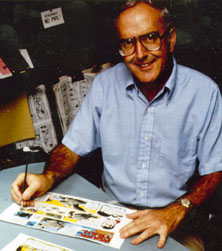
A cartoonist is a visual artist who specializes in both drawing and writing cartoons or comics. Cartoonists differ from comics writers or comics illustrators/artists in that they produce both the literary and graphic components of the work as part of their practice.
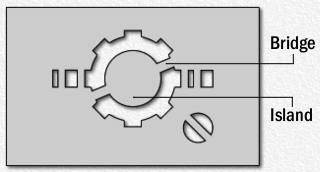
Stencilling produces an image or pattern on a surface by applying pigment to a surface through an intermediate object, with designed holes in the intermediate object. The holes allow the pigment to reach only some parts of the surface creating the design. The stencil is both the resulting image or pattern and the intermediate object; the context in which stencil is used makes clear which meaning is intended. In practice, the (object) stencil is usually a thin sheet of material, such as paper, plastic, wood or metal, with letters or a design cut from it, used to produce the letters or design on an underlying surface by applying pigment through the cut-out holes in the material.

Artists' books are works of art that utilize the form of the book. They are often published in small editions, though they are sometimes produced as one-of-a-kind objects.

Descriptive geometry is the branch of geometry which allows the representation of three-dimensional objects in two dimensions by using a specific set of procedures. The resulting techniques are important for engineering, architecture, design and in art. The theoretical basis for descriptive geometry is provided by planar geometric projections. The earliest known publication on the technique was "Underweysung der Messung mit dem Zirckel und Richtscheyt", published in Linien, Nuremberg: 1525, by Albrecht Dürer. Italian architect Guarino Guarini was also a pioneer of projective and descriptive geometry, as is clear from his Placita Philosophica (1665), Euclides Adauctus (1671) and Architettura Civile, anticipating the work of Gaspard Monge (1746–1818), who is usually credited with the invention of descriptive geometry. Gaspard Monge is usually considered the "father of descriptive geometry" due to his developments in geometric problem solving. His first discoveries were in 1765 while he was working as a draftsman for military fortifications, although his findings were published later on.

Neo-Dada was a movement with audio, visual and literary manifestations that had similarities in method or intent with earlier Dada artwork. It sought to close the gap between art and daily life, and was a combination of playfulness, iconoclasm, and appropriation. In the United States the term was popularized by Barbara Rose in the 1960s and refers primarily, although not exclusively, to work created in that and the preceding decade. There was also an international dimension to the movement, particularly in Japan and in Europe, serving as the foundation of Fluxus, Pop Art and Nouveau réalisme.

Piero Manzoni di Chiosca e Poggiolo, better known as Piero Manzoni was an Italian artist best known for his ironic approach to avant-garde art. Often compared to the work of Yves Klein, his own work anticipated, and directly influenced, the work of a generation of younger Italian artists brought together by the critic Germano Celant in the first Arte Povera exhibition held in Genoa, 1967. Manzoni is most famous for a series of artworks that call into question the nature of the art object, directly prefiguring Conceptual Art. His work eschews normal artist's materials, instead using everything from rabbit fur to human excrement in order to "tap mythological sources and to realize authentic and universal values".

Arte Povera was an art movement that took place between the end of the 1960s and the beginning of the 1970s in major cities throughout Italy and above all in Turin. Other cities where the movement was also important are Milan, Rome, Genoa, Venice, Naples and Bologna. The term was coined by Italian art critic Germano Celant in 1967 and introduced in Italy during the period of upheaval at the end of the 1960s, when artists were taking a radical stance. Artists began attacking the values of established institutions of government, industry, and culture.
Martin Kippenberger was a German artist known for his extremely prolific output in a wide range of styles and media, superfiction as well as his provocative, jocular and hard-drinking public persona.
Varèse Sarabande is an American record label, owned by Concord Music Group and distributed by Universal Music Group, which specializes in film scores and original cast recordings. It aims to reissue rare or unavailable albums, as well as newer releases by artists no longer under a contract. The label's name was derived from combining French-born composer Edgard Varèse's last name with the musical term sarabande, a slow Spanish dance.
Germano Celant was an Italian art historian, critic, and curator who coined the term "Arte Povera" in the 1967 Flash Art piece "Appunti Per Una Guerriglia", which would become the manifesto for the Arte Povera artistic and political movement. He wrote many articles and books on the subject.

In typesetting, a slug is any of several kinds of piece of lead or other type metal. One kind of slug is a piece of spacing material used to space paragraphs. In the era of commercial typesetting in metal type, they were usually manufactured in strips of 6-point lead. Another kind of slug is a single sort, bearing a single letter or any other symbol. More recently, a slug can be an entire line of Linotype typeset matter, where a single piece of lead has been cast bearing a line of text.

Artist's Shit is a 1961 anti-artwork by the Italian artist Piero Manzoni. The work consists of 90 tin cans, each reportedly filled with 30 grams (1.1 oz) of faeces, and measuring 4.8 by 6.5 centimetres, with a label in Italian, English, French, and German stating:
Artist's Shit
Contents 30 gr net
Freshly preserved
Produced and tinned
in May 1961
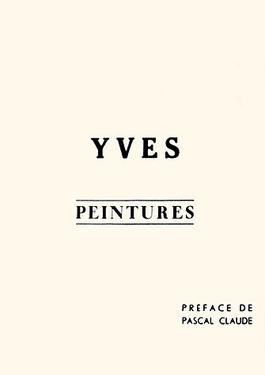
Yves Peintures is an artist's book by the French artist Yves Klein, originally published in Madrid, on 18 November 1954. This publication was Klein's first public gesture as an artist, featuring pages of 'commercially printed papers' that were seemingly reproductions of paintings that, in fact, didn't exist. Using a practice started by Marcel Duchamp, this use of readymade objects to represent nothing but themselves has been referred to as an early example of Postmodernism, using a series of carefully executed strategies to undermine its own authority, and as a precursor to conceptual art. 'The simplicity of his readymades is at once sublime and mischievous.'
"The booklet asserts its character straightaway in the preface: a wordless text of unbroken horizontal lines with the same two paragraph indentations on each page.... a homogenous continuum with no real beginning, middle, or end, and no content - at least insofar as there are no descriptions, analyses, or personalized utterances. The colour plates are similarly presented as anonymous entities, each a flat spatial field of an uninflected hue: turquoise, brown, purple, green, pink, gray, yellow, ultramarine, mint, orange, or red. Here, too, there is no attempt to represent or symbolize anything....
The booklet thus offers an utterly pared down presentation. Unlike most art books, it provides no reverential prose about the artist or the art, and no embellishing descriptions meant to convey meaning or context. Instead the booklet itself is made into a work of art that shares the same spirit of nothingness exemplified by the monochrome paintings that it features." Sidra Stich
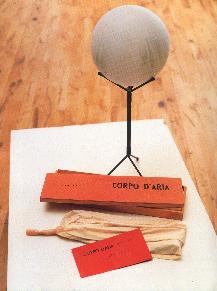
Corpo d'aria is an artist's multiple by the Italian artist Piero Manzoni. Manufactured between October 1959 and March 1960, the pieces are a box, a tripod base, a deflated balloon and a mouthpiece. 45 copies were made and sold at 30,000 lire each. Originally, any buyer could ask Manzoni to inflate the balloon himself, but would be charged an extra Deutschmark for every litre of air expanded. When fully expanded, the balloons measured 80 cm in diameter.

The Dutch Nul Group, which consisted of Armando, Jan Henderikse, Henk Peeters and Jan Schoonhoven (1914-1994), manifested itself in form and name in 1961. On 1 April 1961, a stone's throw from the Amsterdam Stedelijk Museum, Galerie 201 organized the ‘Internationale tentoonstelling van NIETS’. The 'Manifest tegen niets' and 'Einde' ('Ending'), a pamphlet published at the same time, were among the first activities of the Nul group. ‘We need art like we need a hole in the head,’ the pamphlet 'Einde' states; ‘From now on the undersigned pledge to work to disband art circles and close down exhibition facilities, which can then finally be put to worthier use.’ The 'Einde' pamphlet imagines a new beginning, as Armando and Henk Peeters had already proclaimed in texts written several years earlier for the Dutch Informals.
Durium was an Italian record label, active from 1935 to 1989. Part of the catalogue and the brand were subsequently taken over by Ricordi, who used it for some reissues. Its initial trademark consisted of the writing Durium in block letters, surmounted by the stylisation of three trumpets and an eagle. Immediately after the war, this logo was abandoned to move to the stylisation of a disk with three internal rays crossed by the writing Durium in italics.
Shin Gallery is an encyclopedic art gallery owned by Hong Gyu Shin. It specializes in modern and contemporary art, and hosts museum-quality exhibitions. It is located on the Lower East Side of Manhattan, New York, and it opened in 2013. In 2014, an immersive project space was opened next to the gallery. In 2017 Shin Gallery expanded to include three different gallery spaces on Orchard Street. Then in 2020, Shin Haus get launched, a program that aims to discover up-and-coming artists. The Gallery also specializes in rediscovering overlooked artists, traditionally marginalized due to their ethnicity and gender. Shin Gallery also works with a variety of venues including national heritage sites, hotels, and public spaces further demonstrating its international agenda.














